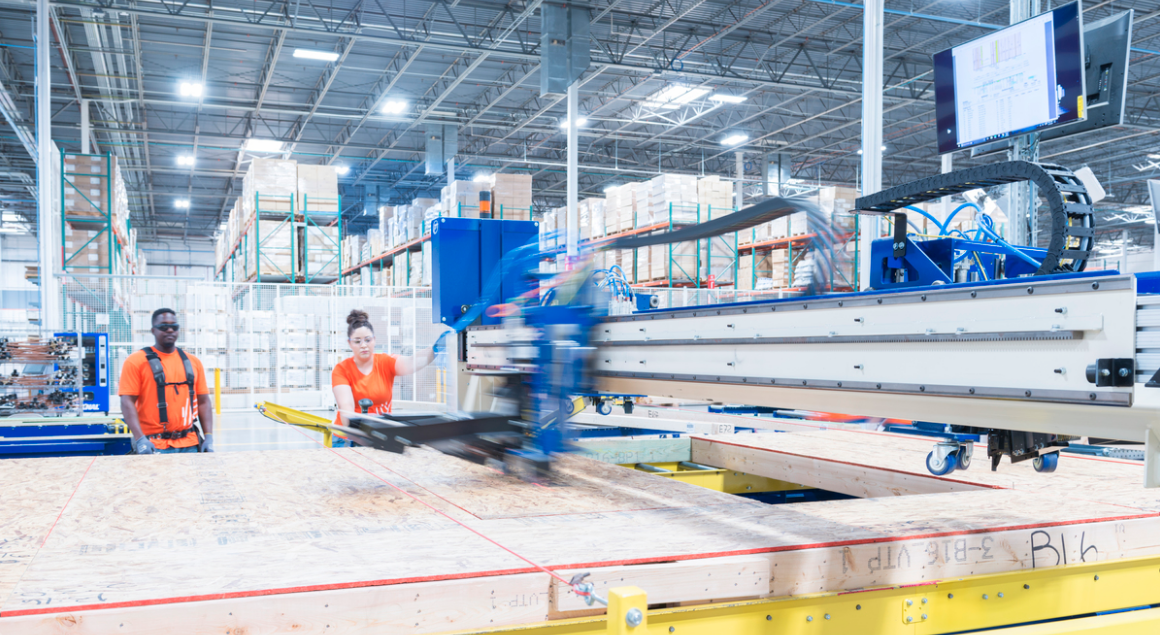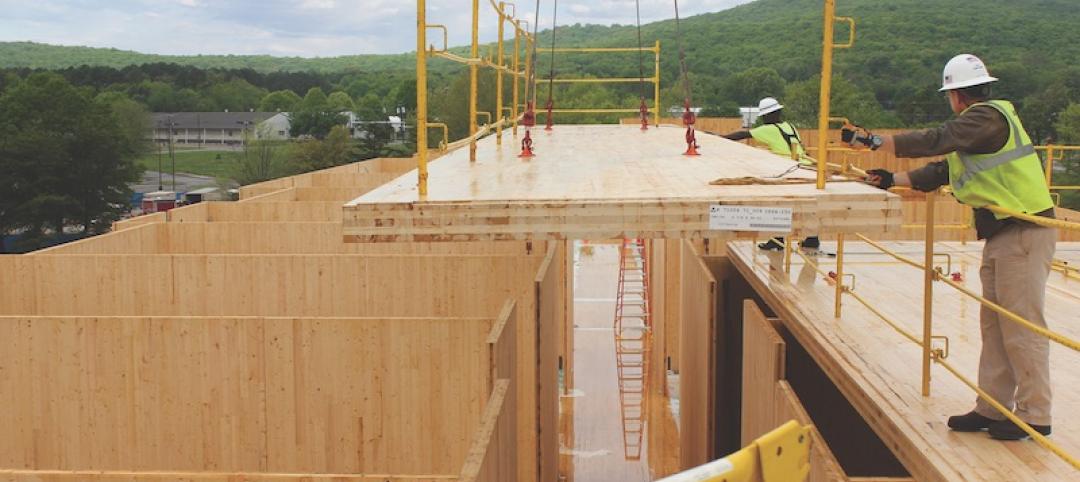As the BD+C editorial team wrapped up work on the 42nd annual Giants 300 report in late June, a number of intriguing industry trends and themes bubbled to the surface. Some are new to us, others simply confirmed our original notions.
The Giants 300 report agglomerates financial data and business dealings from the nation’s largest architecture, engineering, and construction firms (a record-number 480 firms submitted data this year). The AEC “Giants” are a powerful group. Collectively, they represent 60-80% of all design and construction work completed in the nonresidential buildings market in a given year, depending on the building sector and discipline.
Compiling the Giants 300 report gives BD+C editors a unique, bird’s-eye view of the market. Based on the 2018 report, we’ve identified five emerging trends that are likely to transform the construction market in the near future:
1. Offsite construction is here to stay. Once a novelty, offsite construction is taking hold across the industry, as labor shortages persist, the Lean movement grows, and tech-based workflows become prevalent. Major GCs are moving toward manufacturing-based operations, and select owners are requiring prefab on projects.
2. Silicon Valley is eyeing AEC. Billions in venture capital and strategic funding are flooding the AEC market, as nontraditional industries (especially tech) see dollar signs in the transformation of this antiquated, low-margin industry. A Built Worlds report identified 25 VC funds, strategic funds, and accelerators actively targeting AEC. The industry’s new darling, Katerra, nabbed a whopping $865 million from SoftBank. There’s plenty more to come.
3. AI adoption is on the horizon. BD+C has reported on a host of early AI-tech adopters in the AEC market, including Mortenson Construction and WeWork. With the rise of “off-the-shelf” AI solutions, rampant adoption of AI is near. A recent McKinsey report found use cases for AI across the entire project lifecycle.
4. Data is the bottleneck. If tools like AI and AR/VR are the race cars, then data is the fuel—and the industry has a fuel crisis. Experts cite multiple reasons for the data deficit: the siloed nature of AEC, timeliness of the data, “fuzzy” data, and questions about who owns and controls the data. Until the industry can solve its data bottleneck, AEC firms will have a difficult time realizing the full potential of tech tools.
5. Smart buildings are the new green. Prediction: Within seven years, the U.S. market will have a “smart certified” designation, and the label will be as prominent as green/sustainability, health/wellness, and resiliency. Why? Because smart buildings are highly marketable, owner friendly, productivity focused, and resource efficient.
Download BD+C’s report, “Commercial Construction Market Trends: 2018 and Beyond,” here.
Related Stories
| Aug 15, 2016
SPORTS FACILITY GIANTS: New and renovated college sports venues - designed to serve students and the community
Schools are renovating existing structures or building new sports facilities that can serve the student body and surrounding community.
| Aug 15, 2016
Top 30 Sports Facility Engineering Firms
AECOM, Thornton Tomasetti, and ME Engineers top Building Design+Construction’s annual ranking of the nation’s largest sports facility sector engineering and E/A firms, as reported in the 2016 Giants 300 Report.
| Aug 15, 2016
Top 60 Sports Facility Construction Firms
Mortenson Construction, AECOM, and Turner Construction Co. top Building Design+Construction’s annual ranking of the nation’s largest sports facility sector construction and construction management firms, as reported in the 2016 Giants 300 Report.
| Aug 15, 2016
Top 50 Sports Facility Architecture Firms
Populous, HKS, and HOK top Building Design+Construction’s annual ranking of the nation’s largest sports facility sector architecture and A/E firms, as reported in the 2016 Giants 300 Report.
| Aug 15, 2016
MILITARY GIANTS: Cross-laminated timber construction gets a salute from the Army
By privatizing the construction, renovation, operation, maintenance, and ownership of its hotels the Army expects to cut a 20-year timetable for repairs and replacement of its lodging down to eight years.
| Aug 15, 2016
Top 40 Military Engineering Firms
Jacobs, AECOM, and Burns & McDonnell top Building Design+Construction’s annual ranking of the nation’s largest military sector construction and construction management firms, as reported in the 2016 Giants 300 Report.
| Aug 15, 2016
Top 40 Military Construction Firms
Fluor Corp., The Walsh Group, and Hensel Phelps top Building Design+Construction’s annual ranking of the nation’s largest military sector construction and construction management firms, as reported in the 2016 Giants 300 Report.
| Aug 15, 2016
Top 30 Military Architecture Firms
HDR, Clark Nexsen, and Guernsey top Building Design+Construction’s annual ranking of the nation’s largest military sector architecture and A/E firms, as reported in the 2016 Giants 300 Report.
| Aug 12, 2016
SCIENCE + TECHNOLOGY GIANTS: Incubator model is reimagining research and lab design
Interdisciplinary interaction is a common theme among many new science and technology offices.
| Aug 12, 2016
Top 50 Science + Technology Engineering Firms
Jacobs, Affiliated Engineers, and Vanderweil Engineers top Building Design+Construction’s annual ranking of the nation’s largest science + technology sector engineering and EA firms, as reported in the 2016 Giants 300 Report.

















